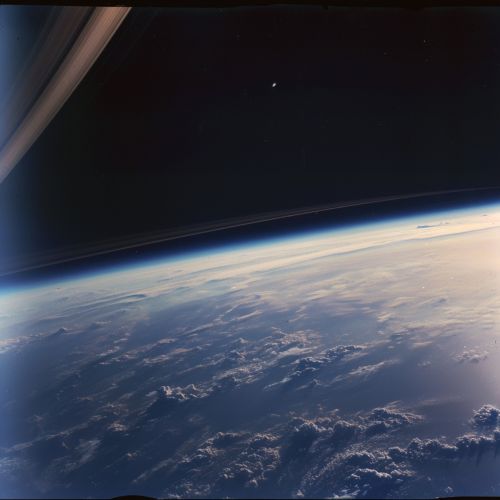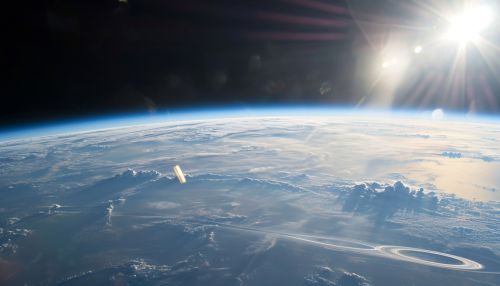Neptune's Rings
Introduction
Neptune's rings are a system of astronomical rings that orbit the planet Neptune. These rings are primarily composed of dust particles coated in water ice, but also contain organic compounds. The existence of these rings was confirmed in 1989 by the Voyager 2 spacecraft, although they had been suspected for several decades prior.


Discovery
The existence of rings around Neptune was first suggested in the early 1980s when ground-based observations revealed faint arcs around the planet. These arcs were later confirmed to be part of a ring system by the Voyager 2 spacecraft, which provided the first close-up images of the rings in 1989.
Composition and Structure
Neptune's rings are composed primarily of dust particles coated in water ice. These particles are believed to have originated from the small moons that orbit Neptune, which have been ground down by micrometeorite impacts. In addition to water ice, the dust particles in Neptune's rings also contain organic compounds, which give the rings a reddish hue.
The ring system of Neptune is composed of five principal rings: Galle, Le Verrier, Lassell, Arago, and Adams. The rings vary in width from a few hundred kilometers for the narrowest, to several thousand kilometers for the widest. The rings are also highly clumped, with the densest parts of the rings containing up to 100 times more material than the sparsest parts.
Dynamics and Evolution
The dynamics and evolution of Neptune's rings are influenced by a variety of factors, including the gravitational influence of Neptune's moons, solar radiation pressure, and micrometeorite impacts. The gravitational influence of the moons causes the rings to precess, or wobble, around Neptune, while solar radiation pressure and micrometeorite impacts cause the rings to spread out and dissipate over time.
Despite these dissipative processes, Neptune's rings have likely existed for at least several hundred million years, and possibly as long as Neptune itself. This suggests that the rings are continually replenished by new material, likely from the small moons that orbit Neptune.
Observations and Exploration
Since their discovery, Neptune's rings have been observed by a variety of ground-based and space-based telescopes. These observations have provided valuable insights into the composition, structure, and dynamics of the rings, as well as their interactions with Neptune's moons and the planet's magnetic field.
In addition to telescopic observations, Neptune's rings have also been explored by the Voyager 2 spacecraft, which flew by Neptune in 1989. This flyby provided the first close-up images of the rings, and confirmed their existence. Future missions to Neptune, such as the proposed Neptune Odyssey mission, may provide further opportunities to study the rings in detail.
